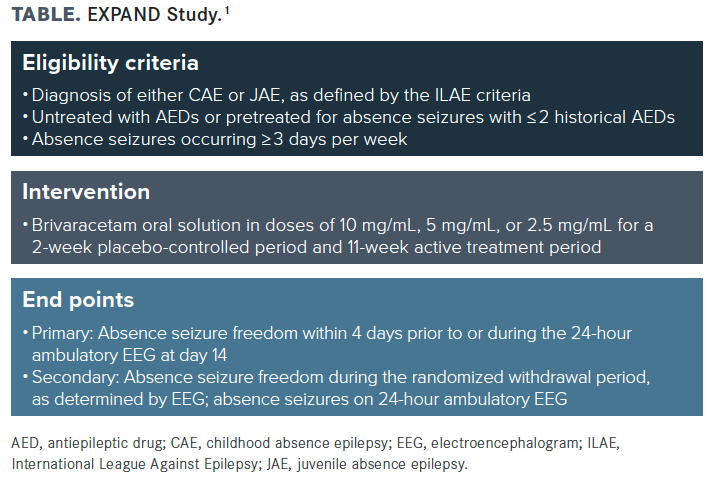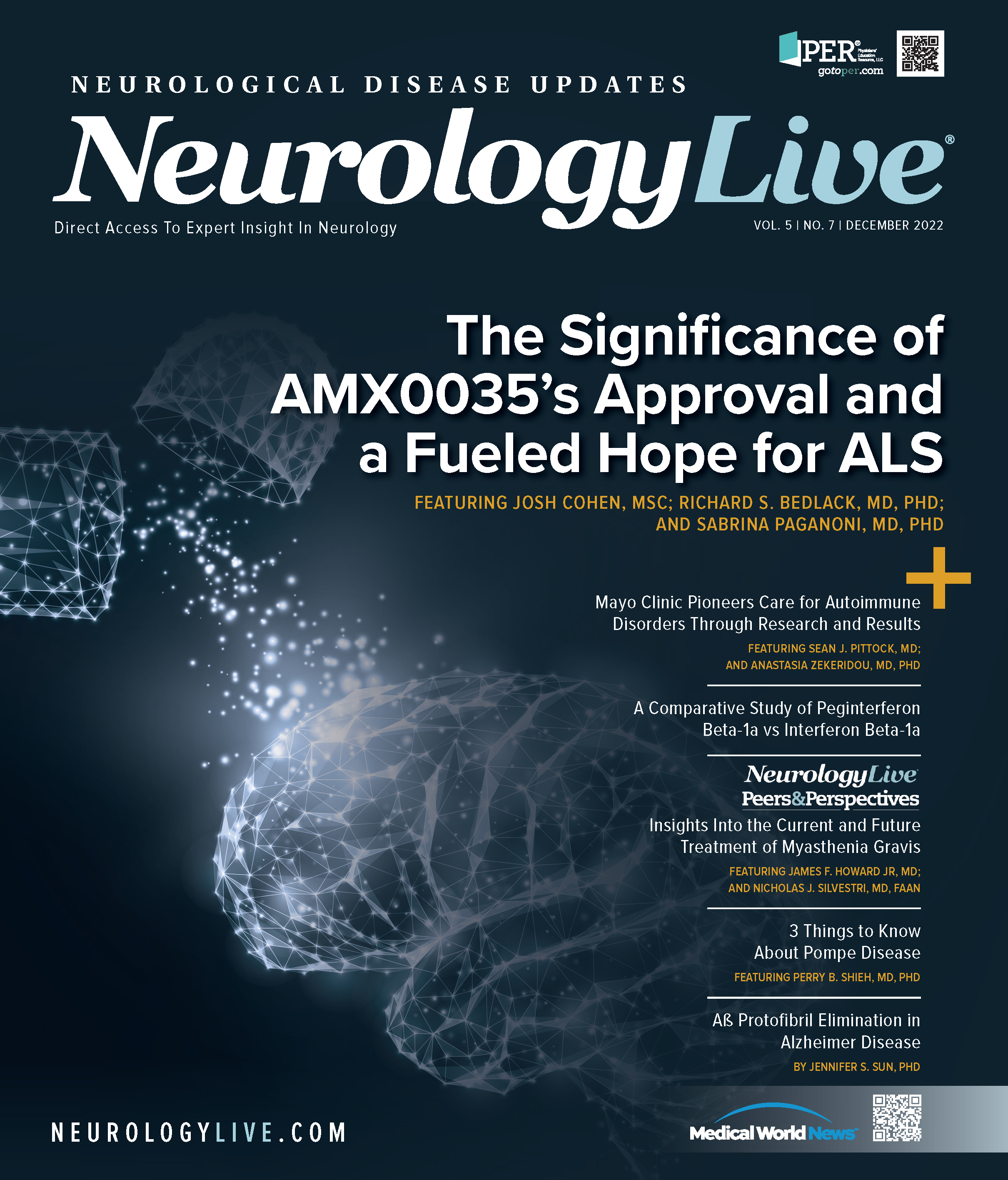Publication
Article
NeurologyLive
Growing Brivaracetam’s Potential Through the Adaptive, Dose-Finding EXPAND Study
Author(s):
The trial’s 2-stage design seeks to answer questions about the dosing and efficacy of brivaracetam, a previously approved agent for partial-onset seizures in patients with childhood absence epilepsy and juvenile absence epilepsy.
Thomas Bast, MD, PhD

BRIVARACETAM (BRIVIACT; UCB), an FDA-approved therapy for pediatric patients with partial-onset seizures, is currently being assessed in an innovative, adaptive trial called the EXPAND trial (NCT04666610). It includes individuals with childhood absence epilepsy (CAE) and juvenile absence epilepsy (JAE), 2 conditions for which treatment options remain limited. The trial began in 2021 and consists of a dose selection and assessment for futility stage followed by an optimal dose stage after interim analysis.
Led by Thomas Bast, MD, PhD, head of the Epilepsy Center Kork, in Germany, the 2-stage design allows the investigation of 2 potentially efficacious doses of the therapy, where one dose is dropped in favor of the other with a better benefit-risk profile. The trial is expected to be completed in 2024, and both stages include an up to 2-week screening period, a 2-week placebo-controlled period, and an 11-week active treatment period. The active treatment period includes 10 weeks of initial treatment followed by a 24-hour electroencephalogram (EEG) and an additional week of active treatment for the 24-hour EEG assessment (TABLE).1
For the primary outcome measure, investigators will assess the percentage of participants who met the criteria for seizure freedom within 4 days prior to or during the 24-hour ambulatory EEG at day 14. Every 24-hour EEG will include hyperventilation as a standard provocation test at the beginning of the EEG. The parallel-group, multicenter center trial is expected to include 160 participants, aged 2 to 25 years, with a diagnosis of either CAE or JAE, as defined by the International League Against Epilepsy criteria.
The individuals in the study enter untreated with antiepileptic drugs (AEDs) or have been pretreated for absence seizures with a maximum of 2 historical AEDs, but without treatment for a period of at least 5 half-lives of the AED before randomization. Additionally, those between ages 2 and 4 years and participants who had an onset of absence seizures at an age younger than 4 years must have a negative glucose transporter type 1 deficiency syndrome genetic test.

Patients who are seizure free at the end of the active treatment period will then enter an up to 4-week randomized withdrawal period, in which investigators will evaluate sustainability of the therapy effect over time and to allow for placebo control while minimizing placebo exposure. Throughout the entire study, the efficacy assessments will be based on 24-hour EEG and seizure diaries, which offer “a robust mechanism of detecting seizure activity and measuring treatment effect,”1 according to the investigators.
The planned design allows for combination of a phase 2 dose-finding and a phase 3 confirmatory efficacy trial, reducing the total number of patients needed to be recruited and the trial duration. Patients who complete the 24-hour EEG at the end of the randomized period may continue on brivaracetam 100 mg/day in the open-label, long-term follow-up trial (NCT05109234) or exit the trial after blinded down-titration (maximum 2 weeks) and safety follow-up (2 weeks).
During blinded downtitration, the dose will be brivaracetam 100 mg/ day (2 mg/kg/day for patients < 50 kg body weight) for week 1 and brivaracetam 50 mg/day (1 mg/kg/day for patients < 50 kg body weight) for week 2. For unblinded downtitration, the doses are at the discretion of the investigator. Unblinded downtitration may last up to 4 weeks, providing additional flexibility. A safety follow-up will occur 14 days after the last dose of the downtitration scheme, regardless of whether a patient was blinded or unblinded.
Previous studies of AEDs in children and adolescents with absence seizures did not use a placebo-controlled or randomized-withdrawal design and did not include stratification by previous treatment status and CAE/JAE. One noted limitation of EXPAND is the inclusion of periods where patients with controlled seizures would be subject to a withdrawal of brivaracetam. However, the study investigators noted that absence seizure references are expected to occur rapidly following withdrawal, and that with an associated rapid reintroduction of the trial drug, it could reduce the amount of time in which untreated absence seizures could possibly occur.1
Brivaracetam was FDA approved in 2016 as an add-on therapy for adult patients with partial-onset seizures, and then as a monotherapy for adults in 2017. It later received an expanded indication as an adjunctive therapy to treat patients 4 years and older in 2018. Most recently, in 2021, the FDA approved an expanded indication of the medication to include an intravenously administered formulation for when oral administration is temporarily not feasible, which is the first for that indication in nearly 7 years.2
REFERENCES
1. Bast T, Schulz AL, Floricel F, Morita D, Cleveland JM, Elshoff JP. Efficacy and tolerability of brivaracetam monotherapy in childhood and juvenile absence epilepsy: an innovative adaptive trial design. Epilepsia Open. 2022;10.1002/epi4.12628. doi:10.1002/epi4.12628
2. UCB announces Briviact (brivaracetam) CV now FDA-approved to treat partial-onset seizures in pediatric patients one month of age and older. News release. UCB Pharma. August 30, 2021. Accessed November 10, 2022. https://www.ucb-usa.com/stories-media/UCB-U-S-News/detail/article/ucb-announces-briviact-brivaracetam-cv-now-fda-approved-pediatric

Newsletter
Keep your finger on the pulse of neurology—subscribe to NeurologyLive for expert interviews, new data, and breakthrough treatment updates.




